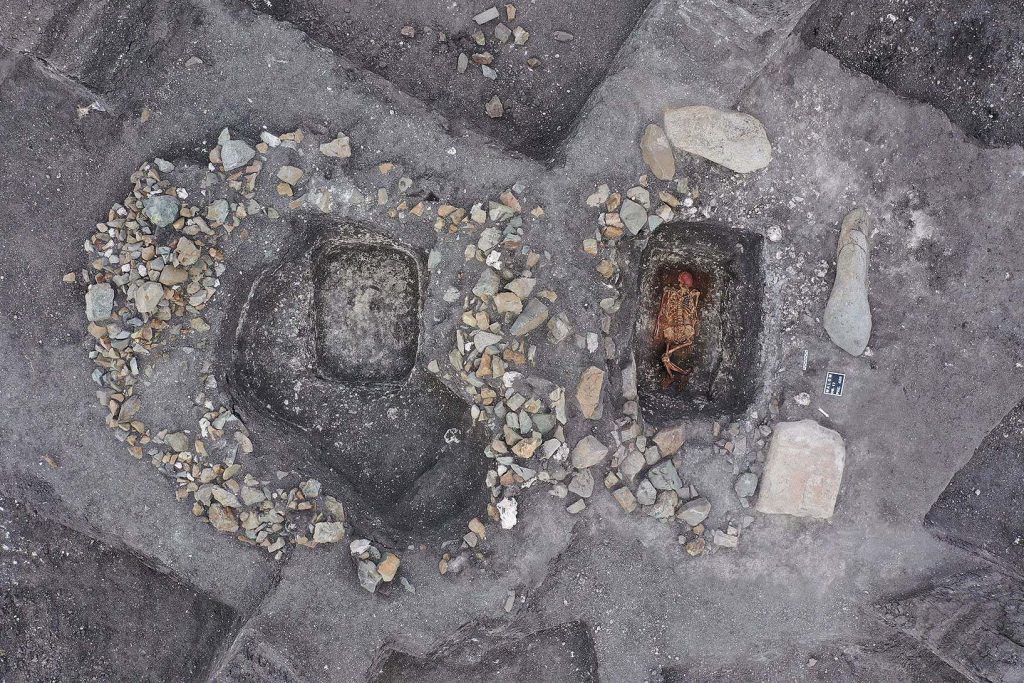A grave in Malomirovo, Bulgaria, containing a human skeleton bearing evidence of horse riding
Michał Podsiadło
The earliest evidence of horse riding has been found in 5000-year-old human skeletons from south-east Europe.
The bones of nine men from graves in Bulgaria, Hungary and Romania show hallmarks of horse riding in the patterns of wear on their spines, legs and pelvises.
The adoption of horse riding is seen as one of the key developments of history, as it helped people to herd livestock, promoted trade and migration, and eventually transformed warfare.
Advertisement
“Suddenly, people had the possibility to move five times as fast and carry 10 times more than they were able to transport before – that’s revolutionary,” says Martin Trautmann at the University of Helsinki in Finland.
It has long been suspected that the first people to domesticate horses were the Yamnaya, livestock herders originating in the Eurasian steppe north of the Black Sea and Caucasus mountains. They went on to colonise most of Europe in what some archaeologists see as a murderous rampage.
Traces of horse milk have been found in shards of their pots. Although this shows that people kept horses, they may have done so first for their milk and meat, so it is unclear when they might have begun riding the animals.
Trautmann’s team analyzed the remains of 217 human skeletons that had previously been found in Bulgaria, Hungary, Romania and Serbia for signs of wear on their bones that could indicate horse riding. They dated from between 3000 and 7000 years ago. “Bones are living tissue and if you are doing certain activities throughout your life, the attached muscles and ligaments exert pressure on the bones,” says team member Volker Heyd, also at the University of Helsinki.
Several features have previously been proposed as hallmarks of horse riding, as they are sometimes present in modern people who spend a lot of time on horseback. They include wear of the top and bottom surfaces of the spinal vertebrae, caused by the up-and-down motion experienced on a horse.
Another potential sign is a thicker and rougher area where thigh muscles join to thigh bones, showing heavy use of the thighs, which could be from needing to grip the horse with the legs. “There’s additional bone growth to make the area where ligament meets bone bigger, so it disperses the force better,” says Trautmann.
The team assessed all the skeletons for six such hallmarks. Five individuals showed the strongest evidence for horse riding, having five or more of the signs. Another four skeletons showed four of the signs. All nine were male, dating from 4500 to 5000 years ago.
But William Taylor at the University of Colorado Boulder says other kinds of evidence of riding, such as remains of bridles, don’t show up in the archaeological record from this region until about 1000 years later. “It does zoom in on this region of the steppes as a homeland, but we are off by almost a millennium.”
The patterns of wear on the bones aren’t conclusive proof of horse riding, as they could have been caused by other activities, such as riding in a cart pulled by cattle, he says. “We don’t have the kind of data I would like to see to let human skeletons track horse riding versus other activities.”
Topics:

